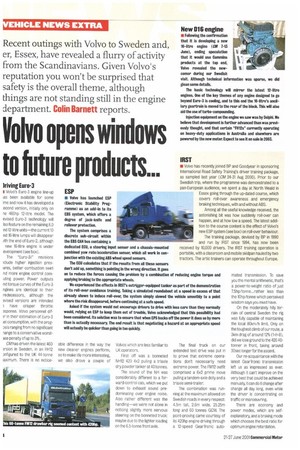ESP
Page 14

If you've noticed an error in this article please click here to report it so we can fix it.
• Volvo has launched ESP (Electronic Stability Programme) as an add-in to its EBS system, which offers a degree of jack-knife and rollover protection.
The system comprises a discrete sub-circuit within the EBS CAN bus containing a dedicated ECU, a steering input sensor and a chassis-mounted combined yaw rate/acceleration sensor, which all work in conjunction with the existing ABS wheel speed sensors.
The ECU calculates that if the results from all these sensors don't add up, something is pointing in the wrong direction. It goes on to reduce the forces causing the problem by a combination of reducing engine torque and applying braking to the appropriate wheels.
We experienced the effects in IRSTs outrigger-equipped tanker as part of the demonstration of its roll-over avoidance training. Taking a simulated roundabout at a speed in excess of that already shown to induce roll-over, the system simply slowed the vehicle smoothly to a point where the risk disappeared, before continuing at a safe speed.
Asked if the system would not encourage drivers to drive with less care than they normally would, relying on ESP to keep them out of trouble. Volvo acknowledged that this possibility had been considered. Its solution was to ensure that when EPS backs off the power it does so by more than is actually necessary. The end result is that negotiating a hazard at an appropriate speed will actually be quicker than going in too quickly.
































































































